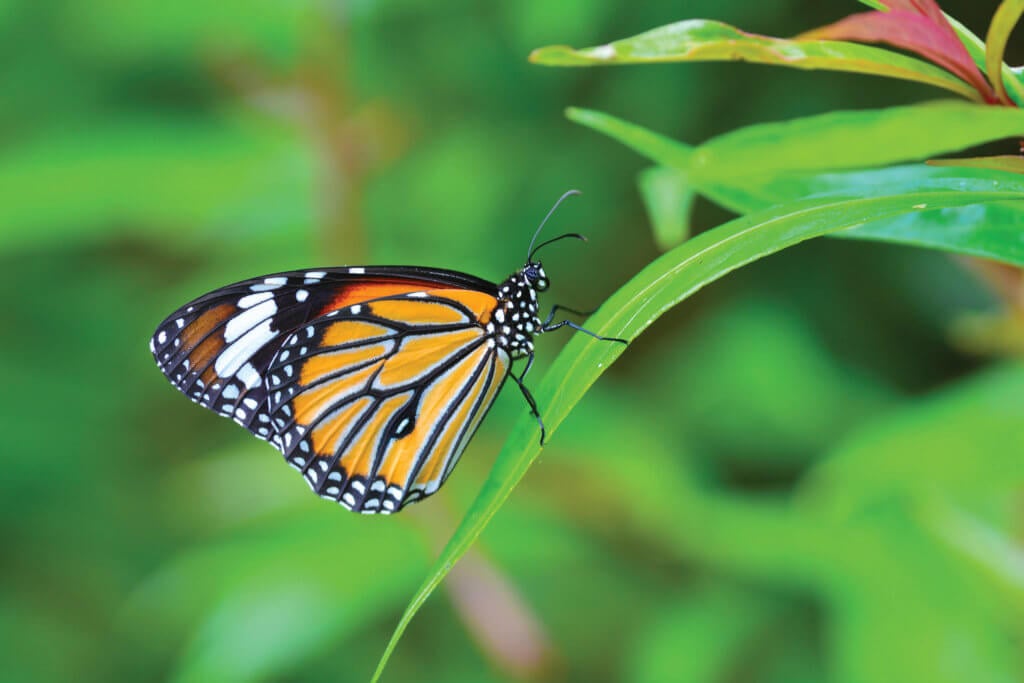At Taylor Morrison, we understand that being a responsible corporate citizen in the communities where we build new homes means giving back to those very same communities. One of the ways we do this is by partnering with organizations dedicated to causes we believe in.
This fall, we’ll be celebrating the one-year anniversary of our partnership with the National Wildlife Federation (NWF), who we have teamed up with to restore and protect wildlife habitat in our communities nationwide. Together, we are engaging staff, residents, and the public in accessible and effective wildlife habitat stewardship and conservation.
As part of this partnership, Taylor Morrison communities across the United States have taken the Monarch Pledge to advance monarch butterfly recovery efforts by planting native milkweed, providing necessary elements for hundreds of new NWF certified butterfly gardens, and educating residents about monarch conservation.
Learn more about our conservation efforts to save and revitalize one of North America’s most iconic species and discover simple things you can do to help it along its mighty migration.
Saving the Monarch
The monarch butterfly isn’t just known for its vibrant colors and classic beauty. They’re also famous for the long journey they take annually across the continent. Each year, these majestic creatures embark on an incredible migration to their wintering grounds. The eastern population migrates up to 3,000 miles from Canada to Mexico. West of the Rockies, the population travels to overwinter along the Pacific Coast in central and southern California. Sadly, the number of monarchs has declined in recent decades by up to 90 percent for the eastern population and over 99 percent for the western population. They’re in need of our help.
Not only are monarchs and other butterflies beautiful, but they also play an essential role in maintaining the health of our ecosystems. They are valuable pollinators, which directly impact our natural world and our food supply. Monarchs and other pollinators help in the production of nearly 75% of our crops and roughly 80% of all flowering plants. A walk in the park or through the garden would be a very different experience without pollinators, such as the iconic monarch butterfly.
Why are they Declining?
There are a number of contributing factors to the decline of the monarch butterfly population. Among them is the use of herbicide that kills milkweed, the only food their caterpillars eat, as well as other native plants that provide nectar to adult butterflies. Other threats include residential and agricultural use of insecticides, general habitat loss, and extreme weather events exacerbated by climate change.
Take the Monarch Pledge
Taylor Morrison has taken the Monarch Pledge and we invite you to do the same. Together, we can help monarch butterfly populations multiply and grow. The Monarch Pledge is simple. It’s all about making sure these adventurous butterflies have the food and energy they need to make their magnificent migration every single year. And it’s as easy as planting native milkweed or other nectar-producing flowers that provide food to monarchs both as caterpillars and as butterflies. Gardeners can build a thriving habitat right in their backyard by planting native wildflowers for breeding and feeding.
Native milkweed is the most important plant to add to your garden as it’s the only plant monarch caterpillars can eat and also serves as a nectar source. Loss of milkweed is driving the decline of monarchs. Beyond milkweed, plant different kinds of blooming native wildflowers, trees and shrubs that flower at different times of the year to provide nectar to the adult butterflies in spring, summer and fall.
Other Ways You Can Support Fall Monarch Migration
In addition to taking the Monarch Pledge, there are many other ways anyone can help monarch recovery efforts and support the butterfly during their fall migration. Plant fall nectar sources, which help monarchs refuel along their migratory route. These native wildflowers bloom from the late summer to fall and are a beautiful addition to your own backyard or community.
Other ways to support fall-migrating monarchs include not spraying any pesticides in your yard, especially on plants monarchs and other pollinators are attracted to; avoiding pre-treated plants and checking if they have been treated with neonicotinoids before making a purchase; planting native trees in your backyard or community, which monarchs gather in while migrating; and supporting Monarch-friendly agriculture.
Monarchs and other butterflies have lots of tricks that help them stay safe from predators. This October we encourage kids and families to look for monarchs along their migration and in overwintering grounds. See if you can spot some tricky butterflies in your neighborhood! Find two different butterflies. To get a closer view, you might want to snap a photo. Do they have any “stay-safe” tricks? Some butterfly trick examples include fake antennae on the tail end, bright warning colors, camouflage colors, looking like a flower or leaf, gathering in large groups, and fake eyes.
Our Progress So Far
We’re proud to have more than 1,000 acres of National Wildlife Federation Certified Wildlife Habitat® in our open space and parks and have a number of successful monarch butterfly demonstrations gardens already-completed. We have 160 habitat projects underway and look forward to certifying more throughout the rest of 2020 and beyond.
Here are just a few highlights of the projects completed over the past year:
- Taylor Morrison has constructed over a dozen monarch butterfly demonstration gardens in communities across the country. These gardens provide the fundamental elements of wildlife habitat: food, water, cover, and places to raise young—which is critical to restoring monarch butterfly habitat.
- Our Esplanade community in Naples, Florida has planted hundreds of nectar-rich plants, trees and shrubs for cover while replacing non-milkweed bushes and shrubs with native milkweed. The Certified Monarch Garden also features puddling areas where butterflies can drink and obtain necessary minerals.
- Our Victoria Heights community in Phoenix, AZ has a demonstration garden anyone can replicate in the area. As part of their Monarch pledge, they will install more than 80 percent native plants throughout the community and will soon earn community-wide Wildlife Habitat Certification™.
Learn More About the Monarch Butterflies’ Incredible Journey
Starting in September and leading into early October, monarch butterflies east of the Rocky Mountains begin their southern migration to Mexico. Most follow along a large path cutting through the middle of the country called the central migratory corridor, but other groups hug tight to the Atlantic coast with a final stop in Florida to recharge before the long flight across the Gulf of Mexico. Some stay in Florida year-round. Rather than journey to Mexico, the monarch population found west of the Rockies migrates to the central to southern California coast for the winter. For National Wildlife Federation resources on helping monarchs in Spanish, click here.









